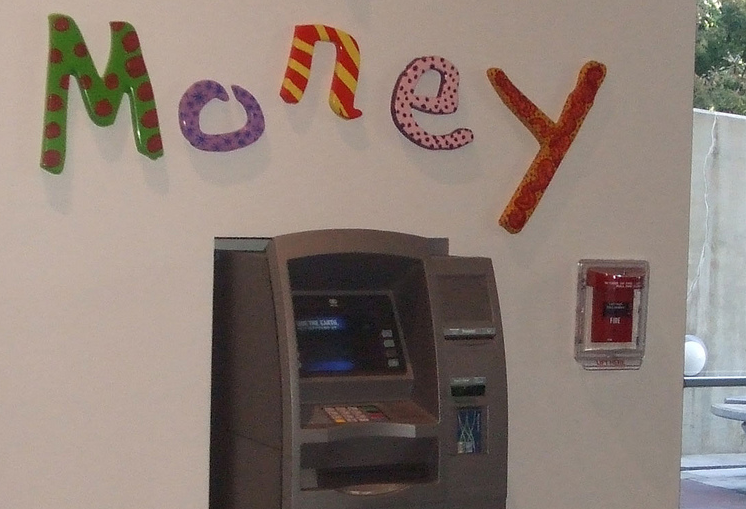Student IDs That Double As Debit Cards Carry Significant Overdraft Fees Image courtesy of (Listener42)
The cozy relationship between institutions of higher education and credit card issuers has come under increased scrutiny in recent years as consumer advocates and legislators have debated whether or not products like student IDs that double as credit or debit cards provide an actual benefit to students or if they’re just a way for schools and banks to rake in the big bucks. According to a new report from the Center for Responsible Lending, the excessive overdraft fees surrounding the use of the cards suggest the latter point.
CRL’s latest report [PDF] “Overdraft U.: Student Bank Accounts Often Loaded with High Overdraft Fees” found the co-branded cards, which are often used to distribute students student aid funds, are more advantageous to the banks than students.
The report – which focuses on overdraft policies for ATM withdrawals and transactions present in many student banking accounts – determined that many of the accounts offered through exclusive deals between colleges and financial institutions include abusive practices that can quickly drain student aid funds.
Under agreements between schools and banks, the financial institution can exclusively provide debit or credit cards to students, while colleges and universities receive millions of dollars a year in royalties and bonuses by allowing said companies to use their logos and approach their students.
Although a recent report from the Consumer Financial Protection Bureau found that college credit card agreements are on the decline, most agreements now focus on less regulated debit and prepaid cards.
The Government Accountability Office recently found there were at least 852 schools that had agreements with companies to market debit or prepaid cards to students in 2013.
To conduct its report, CRL examined eight such debit card agreements identified by GAO report to determine what the annual cost of the products would be for students who incur two, seven and 19 overdrafts per year.
While many of the cards examined by CRL touted low upfront costs, such as free monthly maintenance and free out-of-network ATM use, all but one included high-cost overdraft fees similar to those on more generally available bank accounts.Bank overdraft policies varied significantly between the seven institutions that charged the fees. The cheapest overdraft was reported to be $23 while the most expensive was $37. Additionally, the banks charged an array of extended fees if the account was negative for a certain number of days after the initial overdraft.
![On average the banks examined by CRL allowed students to pay up to $100 per day in overdraft fees. [Click to enlarge]](../../../../consumermediallc.files.wordpress.com/2015/03/fees.png%3Fw=300&h=265)
On average the banks examined by CRL allowed students to pay up to $100 per day in overdraft fees. [Click to enlarge]
Because these accounts are often used to distribute students’ financial aid funds, CRL found that the excessive overdraft fees put the aid – used for books, program dues and living expenses – at risk.
“To put the cost of overdraft fees to the most vulnerable students in perspective, the National Association of College Stores, which represents retail stores such as campus bookstores, found that students spend an average of $655 on textbooks annually,” the report states. “Thus, many students could use the financial aid funds that are now being diverted to pay overdraft fees to pay for their textbooks for some or all of an entire school year.”
CRL found that the accounts associated with the financial institutions and schools’ agreement had no better overdraft policies than accounts students could obtain on their own through another bank; meaning they didn’t provide any actual benefit to students.
In fact, CRL reports that some widely available bank accounts outside the school agreements might provide more favorable overdraft policies.
“Co-sponsored accounts offered to students through exclusive marketing agreements should, at a minimum, have overdraft policies that are at least as consumer friendly as others readily available nationwide, such as these examples,” the report states.
While legislators introduced several bills last session to better protect students from some of the disadvantages of agreements between banks and schools, CRL appeals directly to the Department of Education in its report.
In order to better protect students, CRL urges the Dept. of Education to bar schools from entering into marketing partnerships that allow financial institutions to offer accounts with harmful debit card overdraft fees.
“At a minimum, these types of partnerships should carry significant benefits for students, with the most protection from overdraft fees possible,” the report states. “Because schools have largely failed to take advantage of their bargaining power to offer these protections directly, the Department of Education should take steps to ensure students—and their financial aid funds—have these important protections.”
In addition to ensuring partnerships offer benefits for students, CRL proposes that schools should use the CFPB’s recently proposed Safe Student Account Scorecard before entering into any agreements with banks.
And finally, the group suggests that the Dept. of Education should consider a ban on revenue sharing agreements. A report from the CFPB back in December found that in 2013 colleges and universities received nearly $43 million in royalties and bonuses from credit card issuers.
“The financial misincentives created by revenue sharing agreements effectively use the school to offer up a lucrative new customer base to the banks, rather than the school using its market power to negotiate good deals for students,” the report states.
Want more consumer news? Visit our parent organization, Consumer Reports, for the latest on scams, recalls, and other consumer issues.



![CRL examined the overdraft policies of eight banks with college agreements. [Click to enlarge]](../../../../consumermediallc.files.wordpress.com/2015/03/policies.png%3Fw=1060)